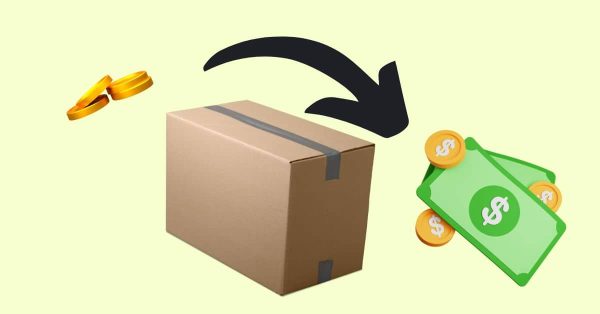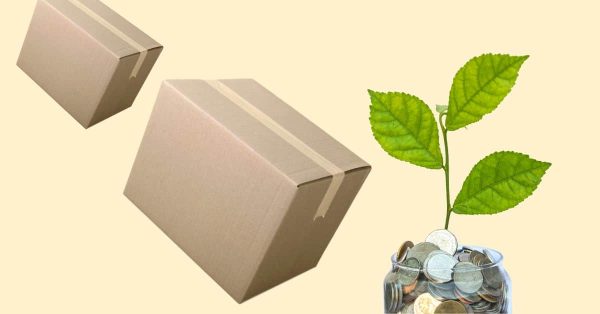If you’re ready to break free from the 9-to-5 or just looking for a side hustle that pays, starting a dropshipping business might be for you. But what is it, how does it work, and can you make money by dropshipping? And if so, how?
That’s why we’re here—to give you all the practical tips you need to kickstart your journey towards financial freedom with an online store.
We won’t use complicated jargon, just the practical steps and insider tips you need to make your e-commerce ambitions come true. We’ll even show you how to help your dropshipping store steal a lead from your competitors by maximizing your dropshipping profits.
So, let’s get started.

What is a dropshipping business?
Dropshopping lets you become a shopkeeper without having a shop or the worry of ordering too much stock.
To simplify it even further, here’s how dropshipping works:.
- You open an e-commerce store and add products from online dropshipping suppliers (like Amazon, Alibaba, AliExpress, SaleHoo, Wholesale Central, etc.).
- A customer visits your store and orders the products they want.
- The customer pays on your store’s site for the products and the shipping cost.
- The order is automatically forwarded to the supplier, and you pay the wholesale price; the difference is yours.
- The supplier packages and ships the products directly to the customer.
- The customer receives their order, leaves a review, and the process starts again.
After you’ve made the initial decision to become a dropshipper, you’ll need to invest quite a bit of time into setting up and automating the whole process.
With an automated purchase, payment, and delivery process, you’re left free to focus on a marketing strategy for your dropshipping store and getting new customers.

The dropshipping business model – choosing the right products
Selecting the right niche and the right products for your online store is crucial to the success of your dropshipping business.
Let’s say you’re interested in beauty and skincare. If so, you’d be wise to start by researching trending beauty products – maybe facial serums or natural skincare items are gaining popularity according to Google Trends.
Next, you need to understand your audience. If you’re targeting a younger customer base interested in clean beauty, your products might focus on cruelty-free, eco-friendly options, or trendy skincare ingredients.
You’re going to have competition, that’s for sure. That’s why you’ll have to think carefully about what makes your shop stand out. Maybe you specialize in personally curated beauty boxes with unique, hard-to-find products. Or maybe your products contain ingredients that everyone wants to get their hands on.
As part of your marketing strategy, use social media to observe discussions around skincare products, routines, or popular beauty influencers. If there’s a buzz about specific ingredients or skincare hacks, that’s the kind of valuable information you can put to good use, and change your product offerings accordingly.
Combining this knowledge, you can create a niche beauty store with a unique selection of products not easily found anywhere
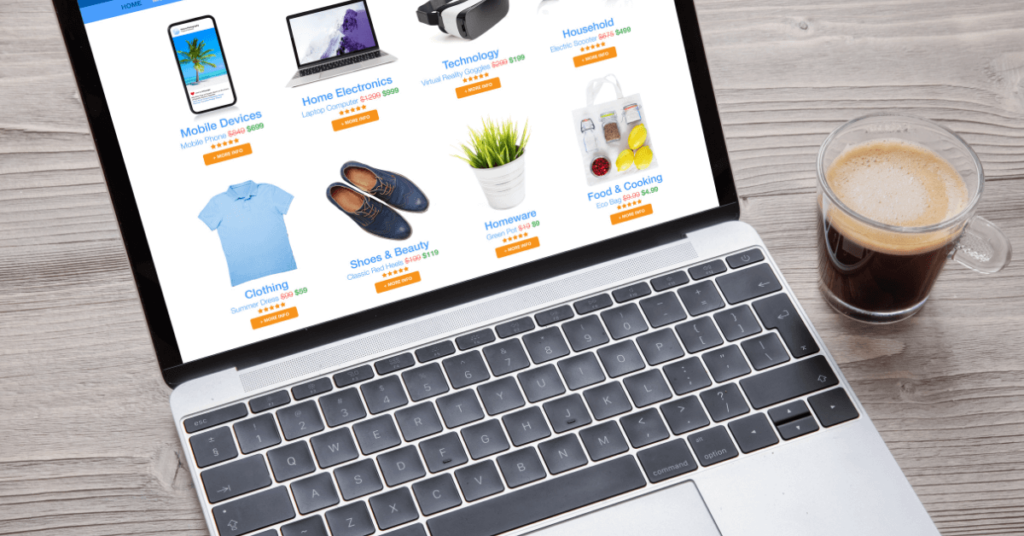
Where to find your dropshipping suppliers
Without having a solid partnership with reliable suppliers, your dropshipping business is unlikely to do very well. The quality of your products and the reliability of shipping will influence your customer’s satisfaction.
That’s why most successful dropshippers use established platforms like AliExpress, Oberlo, SaleHoo, and Monetha. Think of them as the middlemen who connect you with a vast network of proven suppliers right around the world. In Monetha’s case, they even let you earn significantly more than your competitors (More about that below).
By using platforms like these, you get access to a pool of suppliers that have already been vetted by other dropshippers. They also let you browse products by category, read reviews, and assess product ratings.
Suppliers like Oberlo integrate seamlessly with platforms like Shopify making it easier to find the right products quickly and easily, and Monetha offers an additional range of discounts and rewards to let you make even more money than normal.

The knitty-gritty of setting up a successful dropshipping business
This part really couldn’t be easier.
Choose a user-friendly e-commerce platform like Shopify or WooCommerce to create your store. Once you’ve done that, customize your store to reflect your brand and create a seamless user experience.
For example, Shopify, for instance, offers a hassle-free, all-in-one solution with various templates and plugins that simplify the store-building process. Its user-friendly drag-and-drop interface enables quick customization, allowing you to tailor the look and feel of your store to match your brand aesthetic.
After setting up your store, focus on product selection. Research and choose products that align with market trends and cater to your target audience.
Consider factors like product quality, pricing, and uniqueness. Reliable suppliers are crucial, so utilize platforms like AliExpress, Oberlo, or SaleHoo to connect with trusted suppliers globally. Build strong relationships with your suppliers to ensure timely order fulfillment and maintain product quality.
Remember, the success of your dropshipping business depends not only on the technical setup but also on your strategic product choices and supplier relationships.
Regularly update your store, analyze customer behavior, and optimize your dropshipping store strategies to stay competitive in the dynamic world of dropshipping.

How to source products for dropshipping businesses
Discovering reliable dropshipping companies is really important for your e-commerce business. However, it’s a challenging task as many dropshippers, often smaller companies, can be elusive and it’s hard to find the product you want.
Additionally, the risk of encountering scammers demanding hefty upfront or monthly fees adds another layer of complexity to this process.
Top tip for product searches:
When you’re searching for products for your online store try using the following search command. “Women’s eco-friendly lipstick” + “Supplier”, the use of quotation marks will make sure you find exactly what you’re looking for.
While you can always change your supplier if something doesn’t work out, it’s better to find the right one the first time around, as this can affect every aspect of your business.
- Customer satisfaction, loyalty, and reviews
- Cost and delivery times
- Quality, pricing, and consistency of products
- The reputation and brand image of your business
- Stress levels and working hours

Getting your pricing right
When it comes to pricing, the number one rule for a successful dropshipping business model is to set competitive but profitable prices. Think about shipping costs, supplier fees, expenses—salaries, sourcing costs, platform fees, returns and refunds, delivery delays, bank processing fees, software, etc.—and your profit margin. However, be transparent about pricing to build trust with your customers.
There are various pricing strategies you can use for your business.
Keystone pricing: The commonly used method simply involves doubling the wholesale cost.
Discount pricing: offering products at a lower price than your competitors. This is useful for promotions or attracting price-sensitive consumers.
Dynamic pricing: adjusting prices in real time to match market demand, competitor pricing, or other external factors like currency fluctuations.
Bundle pricing: cheaper prices for customers who buy in larger quantities.
Free-plus-shipping Offering a product for free and charging only for shipping helps increase customer loyalty.
Anchor pricing: displaying a higher-priced item next to the target product to make it seem more reasonably priced.
Loss leader pricing: selling a product at a loss to attract customers with the expectation of making profits through related product sales. A tactic commonly used by large grocery retailers.
Value-based pricing: setting prices based on the perceived value—luxury or unique—of the product to the customer. Focuses on the benefits and unique features.
Competitive pricing: setting prices based on what competitors are charging for similar products. Helps maintain competitiveness in the market.
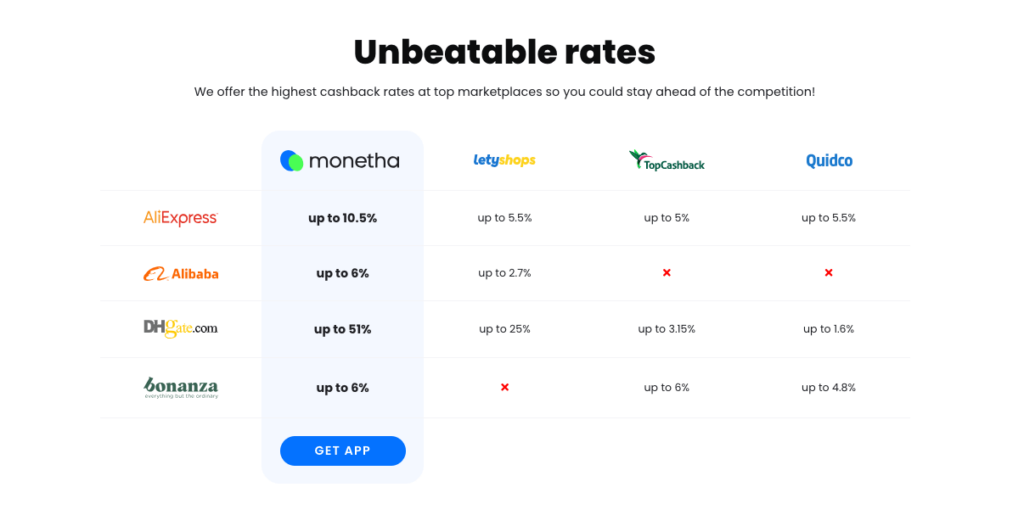
Using Monetha to maximise cashback rates for dropshippers
Monetha is an online shopping rewards program that lets users earn rewards that include cash back, cryptocurrencies, and other rewards for shopping online. But by using Monetha as your product supplier, not only do you get the best rates, but you’ll also get extra cash back when shopping with platforms like AliExpress, Alibaba, Bonanza, and hundreds of others.
And here’s another great bonus.
Users can become Monetha Platinum+ account holders by doing some additional daily tasks to grow their online dropshipping business profile. Additionally, they can deposit their $MTH token earnings for up to 14 days to have their account boosted to reach Platinum+ level quicker; the minimum deposit amount is approximately $15.
Deposit $MTH to unlock Platinum+ perks instantly, like a 333% cashback boost. Imagine spending $1,000 with a 3% regular cashback—Platinum+ gives you $100 back instead of $30.
And do you know what the best part is? When the deposit period ends, you get your tokens back too.

The rest of the stuff you need to know about making your dropshipping business a success
Creating your drop-shipping business
Invest time in effective digital marketing strategies for your dropshipping business- Udemy and other tutorial sites offer a whole range of courses to help you understand topics like e-commerce platforms, how to make dropshipping profitable, search engine optimization, how to identify a target audience, building customer loyalty, low profit margins, and a lot more.
Once you’ve learned the basics, you can then utilize social media, content marketing, and SEO to drive traffic to your dropshipping business and leverage influencer partnerships for a wider reach.
Customer service excellence
Prioritize exceptional customer service to build trust and encourage repeat business for your ecommerce store. Respond promptly to queries, address concerns, and provide accurate product information about everything from shipping costs to product quality.
Store optimization
Keep your store relevant to your customers by updating and improving it regularly. Keep an eye on how well your products are doing, understand what your customers like, and adjust your plans accordingly. Use SEO tricks to make your store more visible online.
Handling returns and refunds
From the beginning, establish clear return and refund policies for your e-commerce platform. Communicate these clearly on your website. Work closely with dropshipping companies to facilitate smooth returns and maintain customer satisfaction with your dropshipping business.
Scaling dropshipping businesses
As your dropshipping business gains traction, explore opportunities for expansion; consider adding new products, exploring different niches, and diversifying your marketing channels.
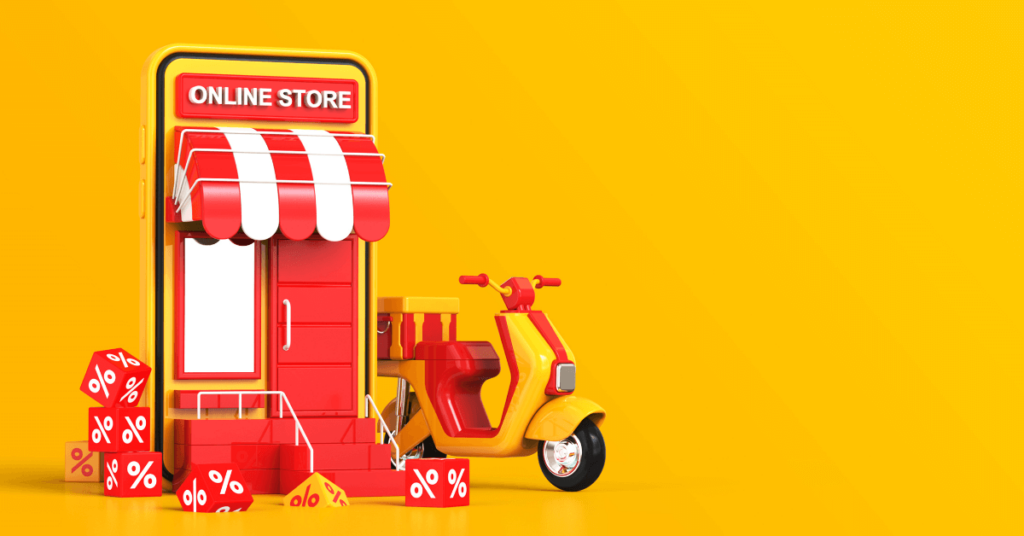
Conclusion
With every successful e-commerce store, success comes from smart planning, effective execution, and keeping customers happy. Follow this guide, and with Monetha by your side, you’re on your way to building a thriving online business where you can make money dropshipping all around the world.
FAQs
Dropshipping is a retail method where you sell products without keeping them in stock. When a customer buys, you purchase from a third party, who ships directly to them.
No, dropshipping requires minimal upfront investment, as you don’t buy inventory before making sales.
Use platforms like AliExpress, Oberlo, Monetha, and SaleHoo, and check reviews and ratings to find trustworthy suppliers for your e-commerce platform.
It depends on the supplier. Communicate with them to clarify customization options before listing products.

